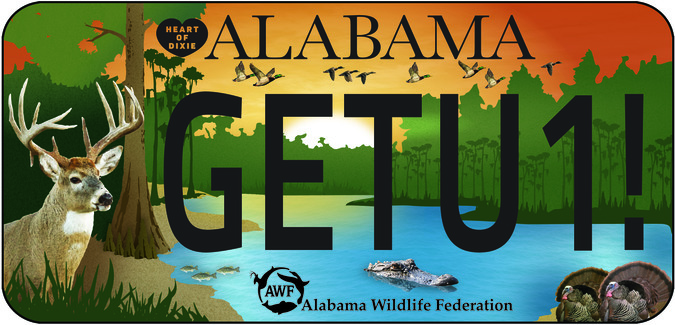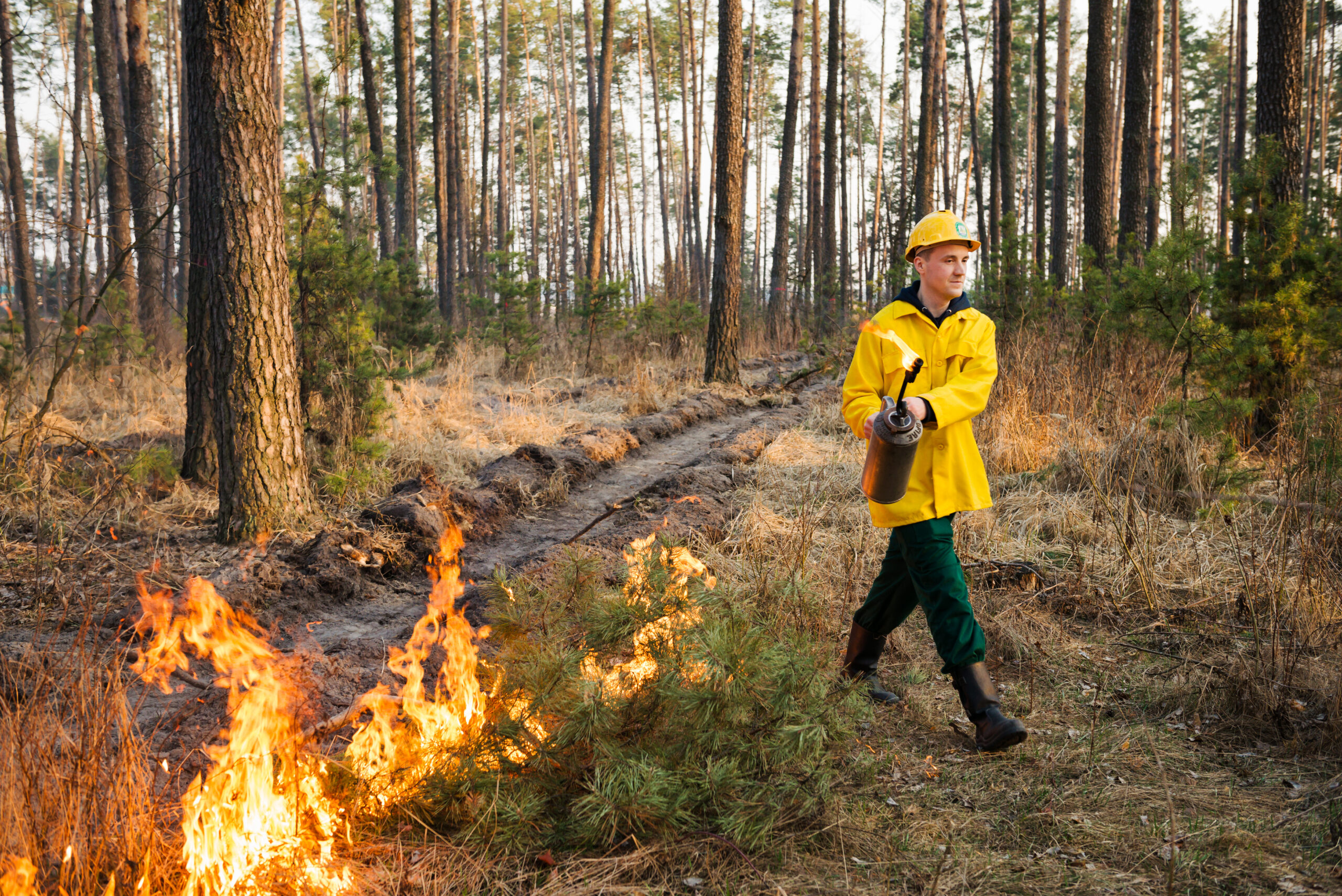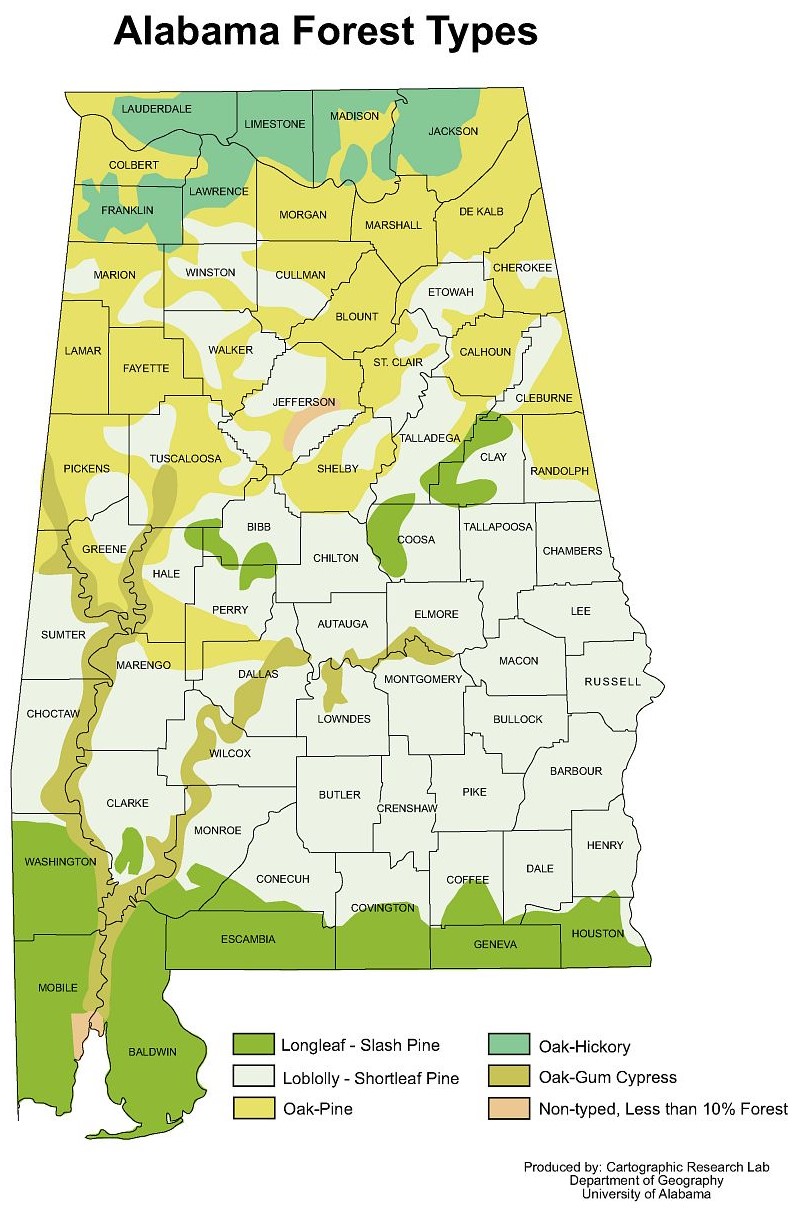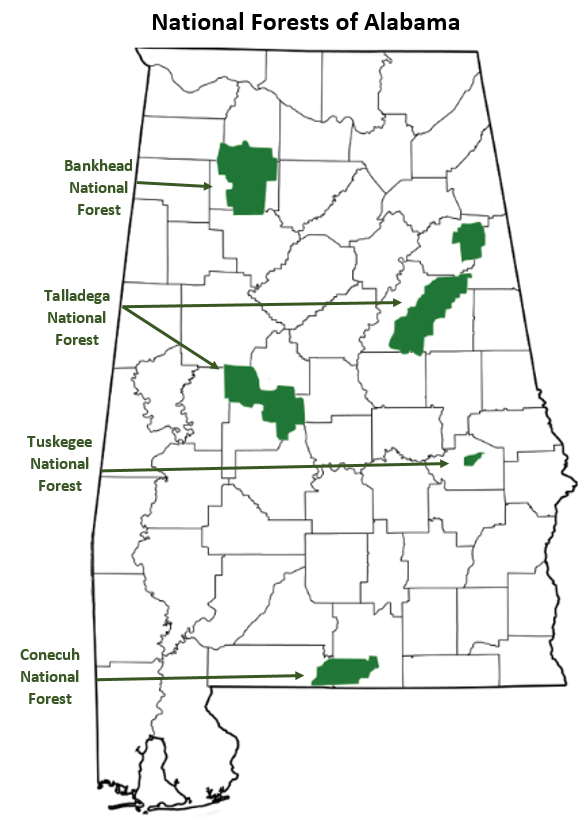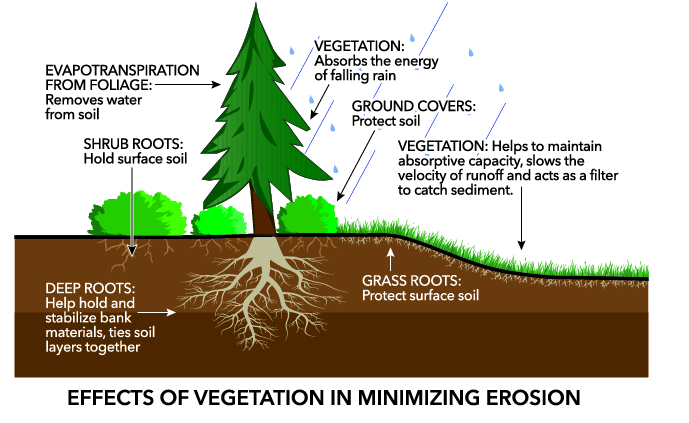 Investigate Alabama's Forests
Investigate Alabama's Forests
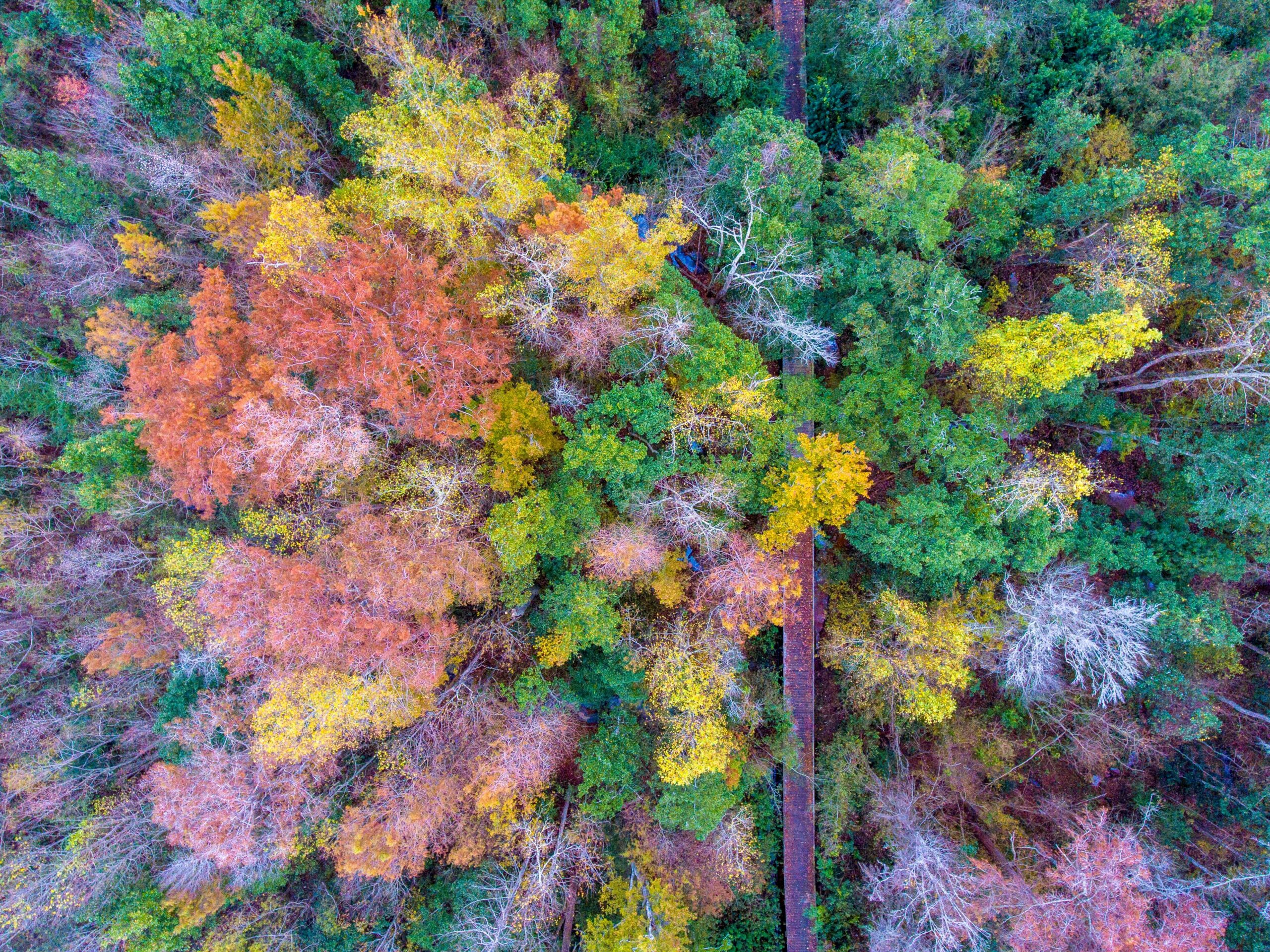 |
A forest is simply an area of land dominated by trees. Forests cover approximately 1/3 of the planet and are home to most of its plants and terrestrial animals (those that live on land).
Forests cover about 70% of Alabama's land and play a very important role in our state's biodiversity (its variety of plants and animals), economy (the way people spend or make money), air and water quality, and culture.
| Click on the categories below to learn more about Alabama's forests. |
||
| Forest Types | Forests In Alabama | Importance of Forests |
| Forest Types | |
| There are three main types of forests. Each type is defined by where it occurs in the world, the length of its seasons, and in turn, the types of plants and animals that live within it. | |
| Tropical Forests: | |
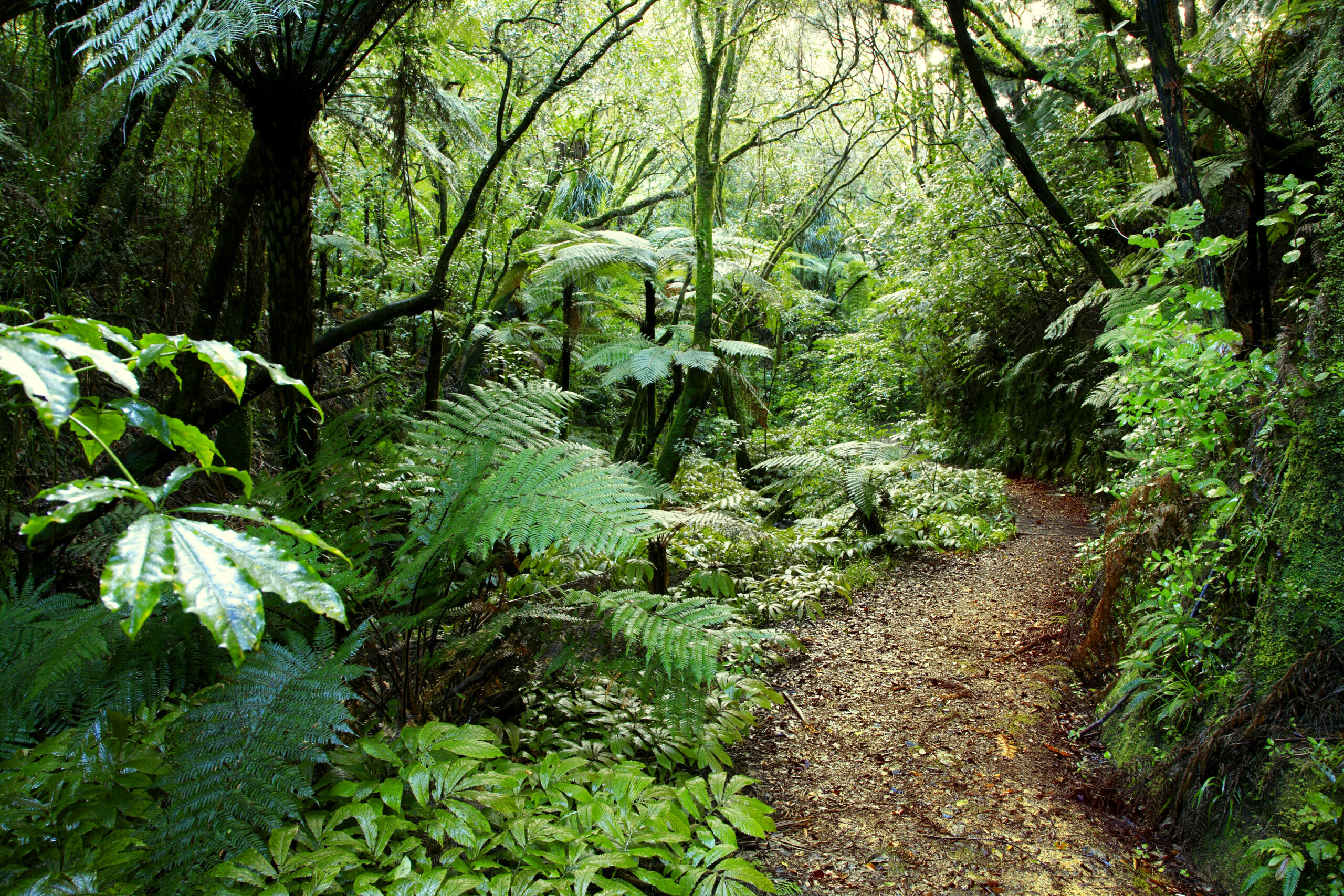 Tropical forests are found near the equator and are home to the most biodiversity of all forest types. Generally, temperatures in tropical forests vary little throughout the year, staying warm to hot consistently. This allows the growing season to last most of, if not the whole year. Tropical forests experience two distinct seasons: rainy season and dry season. The length of these seasons varies based on the type of tropical forest – for example, tropical dry forests experience a long dry season followed by a short rainy season while tropical rainforests experience little to no dry season and a lengthy or continuous rainy season. Flora (plant species) is highly diverse, with upwards of 100 different tree species per 250 acres. Trees are mostly evergreen with large, dark green leaves. Tropical forests are found near the equator and are home to the most biodiversity of all forest types. Generally, temperatures in tropical forests vary little throughout the year, staying warm to hot consistently. This allows the growing season to last most of, if not the whole year. Tropical forests experience two distinct seasons: rainy season and dry season. The length of these seasons varies based on the type of tropical forest – for example, tropical dry forests experience a long dry season followed by a short rainy season while tropical rainforests experience little to no dry season and a lengthy or continuous rainy season. Flora (plant species) is highly diverse, with upwards of 100 different tree species per 250 acres. Trees are mostly evergreen with large, dark green leaves. |
|
| Temperate Forests: | |
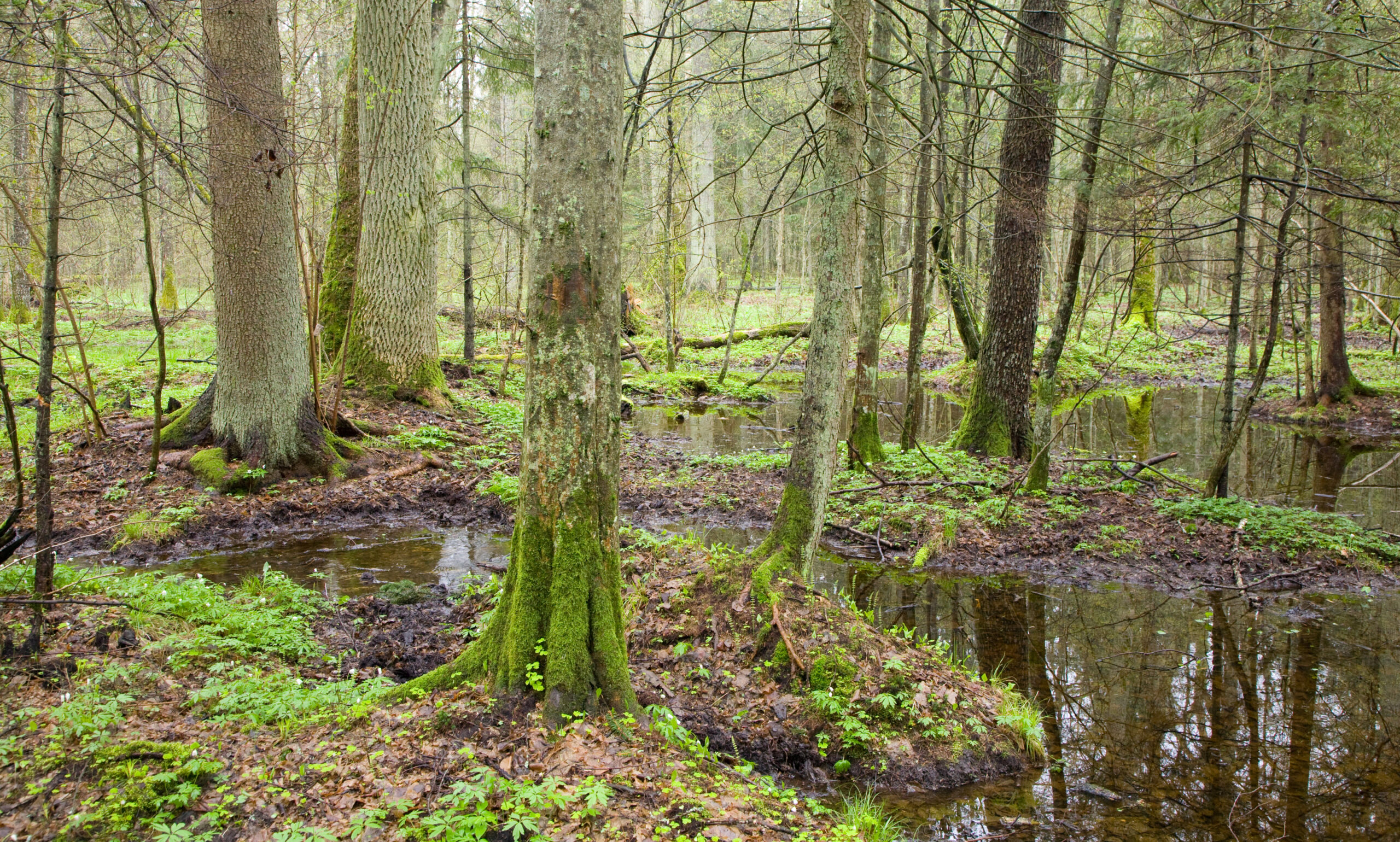 Temperate forests are found between the tropics and polar regions where the climate is moderate – neither extremely hot nor extremely cold. Winters are distinct and all 4 seasons are defined with 4-6 months being frost-free. Temperatures vary greatly and precipitation is moderate. This creates a growing season of up to 200 days. Flora is less diverse, with 3-4 different tree species per 250 acres. Trees typically have broad leaves that fall off each year. Temperate forests are found between the tropics and polar regions where the climate is moderate – neither extremely hot nor extremely cold. Winters are distinct and all 4 seasons are defined with 4-6 months being frost-free. Temperatures vary greatly and precipitation is moderate. This creates a growing season of up to 200 days. Flora is less diverse, with 3-4 different tree species per 250 acres. Trees typically have broad leaves that fall off each year. |
|
| Boreal Forests: | |
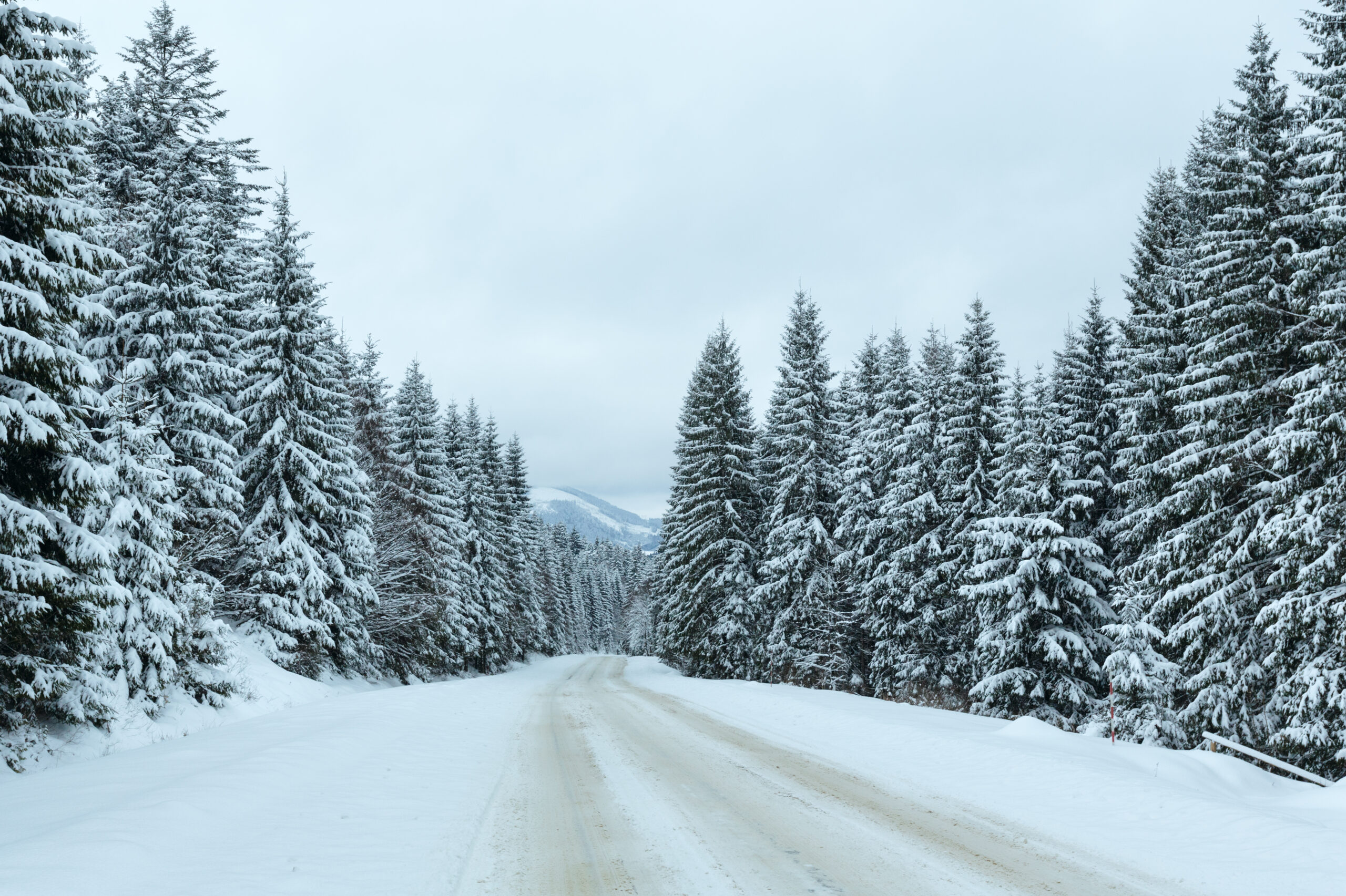 Boreal forests are found in the Northern Hemisphere in a ring below the North Pole where the climate is cold. Summers are short, warm, and wet and winters are long, cold, and dry. The growing season lasts up to 130 days. Flora is mostly cold-tolerant evergreen conifers (plants that bear woody cones) with needle-like leaves. Boreal forests are found in the Northern Hemisphere in a ring below the North Pole where the climate is cold. Summers are short, warm, and wet and winters are long, cold, and dry. The growing season lasts up to 130 days. Flora is mostly cold-tolerant evergreen conifers (plants that bear woody cones) with needle-like leaves. The term "taiga" is sometimes used interchangeably with the term "boreal forest". |
|
| Forests In Alabama | |||
| Of the 33.5 million acres of land in Alabama, 27 million are forested. That means roughly 70% of the state is covered in trees. These forests contribute to the state's rich biodiversity and also play an important economic role.
Fires In the Forest During the 1900's, forest fires were considered harmful and were prevented whenever possible. As a result, overcrowding occured across the state, and the plants that needed fire for growth as well as the animals that depended on them declined. |
|||
| Nowadays, in areas where forests have become overcrowded and unhealthy, scientists can introduce fire strategically. This is called prescribed burning, which is the controlled use of fire by a team of experts under specific weather conditions in order to restore forest health. Prescribed burning has become an important forest management tool used by scientists across Alabama as many of our forests are fire-dependent but have been deprived of fire for a long time. | |||
| Alabama's Forest Types Alabama's forests are temperate, meaning they are found between the tropical and boreal regions in areas neither extremely hot nor cold and have four distinct seasons – some of which support growth. Spring and summer bring opportunity for growth as leaves absorb sunlight. But as days shorten in fall and winter arrives, growth pauses and leaves begin to dry, change color, and drop from trees. Trees that shed leaves seasonally are called deciduous. Some of Alabama's deciduous trees include oaks, elms, ash, and beeches. Generally speaking, these trees are considered to be hardwoods (trees with broad leaves, true flowers, and seeds enclosed in a fruit or shell). Alabama is also home to trees called conifers that have needles rather than leaves. These trees have needles and cones and are typically evergreen (stay green year-round). A forest with mostly conifers is called a coniferous forest. Some of Alabama's conifers include cedar, cypress, hemlock, and pine. Generally speaking, these trees are considered to be softwoods (trees with "naked" seeds). |
||
| Many of Alabama's forests are called "mixed forests", meaning they have both deciduous trees and conifers. The map shown above shows the distribution of the most dominant forest types across the state, but does not show all of Alabama's forest diversity. | ||
| Alabama's landscape and forest types have experienced changes throughout history based on use and management practices. Forest types across the state chage as you move across the different ecoregions (shown on the map below). | ||
|
The Interior Plateau region is home to two different forest types: shortleaf pines and oaks are found in areas with drier soil while oak-hickory and mixed hardwoods are found on steep slopes near the Tennessee River. Rocks and slopes naturally create a fragmented landscape that excludes fire, making this area one of the few areas in the state not shaped by fire. It is home to the American smoketree, honeylocust, and rare sugar maple.
The Southern Appalachians region has more rolling hills and high elevation. The forests are not so fragmented and are predominantly shortleaf pine, longleaf pine, and oaks. Because fire couldn't reach the area, a greater variety of species can be found on the bluffs, cliffs, and ravines, where many trees live in shallow soils and dense thickets rather than traditional forests. Here you can find Virginia pine and black locust trees. |
Alabama's Ecoregions
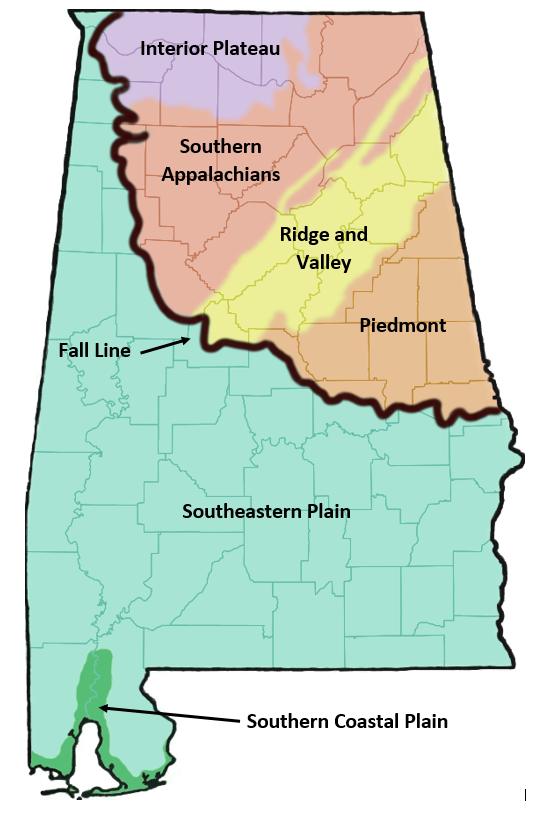 |
|
| As the name implies, the Ridge and Valley region is characterized by long ridges with valleys in between. Longleaf and shortleaf pines are most common but hardwoods are found in narrow valleys. | ||
|
The Piedmont is home to mostly pine trees (short and longleaf) due to its shallow, sandy soils, though the northern slopes of this region have mostly hardwoods. Fires were frequent in this region historically, which promoted more longleaf than shortleaf forests at the time.
The Coastal Plain region was historically and is currently home to mostly pine forests. As you move farther down the state closer to the coast, the percentage of pines increases. The exception to this is the Black Belt area. This area was historically home to prairies that were naturally treeless prior to humans developing the area with farms. Fires weren't frequent so forests were limited and largely hardwood. |
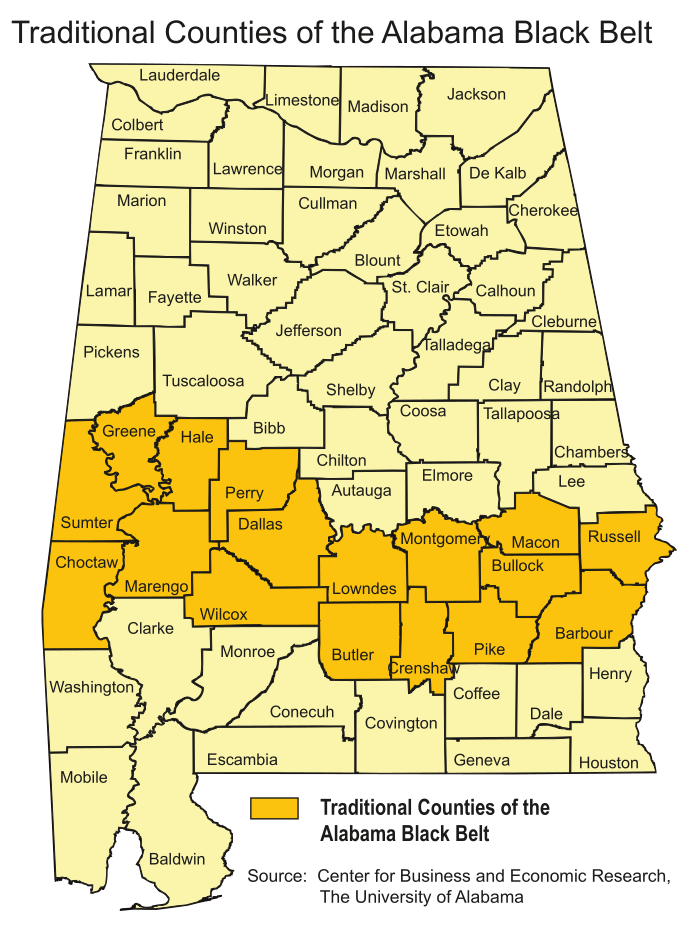 |
|
| Alabama's National Forests | |
| National forests are areas protected by the US Forest Service, a government agency. These areas are off limits to private ownership or development and are, most importantly, available for the public to enjoy activities such as hunting, fishing, hiking, camping, and boating. Our 4 national forests span 17 counties across 667,000 acres. They are home to roughly 900 species of birds, mammals, reptiles, amphibians, and fishes.
During the early 1900's before National Forests were created, most of the land was eroded or heavily-cutover and generally in bad shape. The mindset at the time was to simply use the land as much as possible for farming, logging, or other activities that benefited humans. Now these lands provide communities with clean air, water, and wildlife habitat. In fact, there are eight counties in Alabama that rely on national forests as a water source. |
|
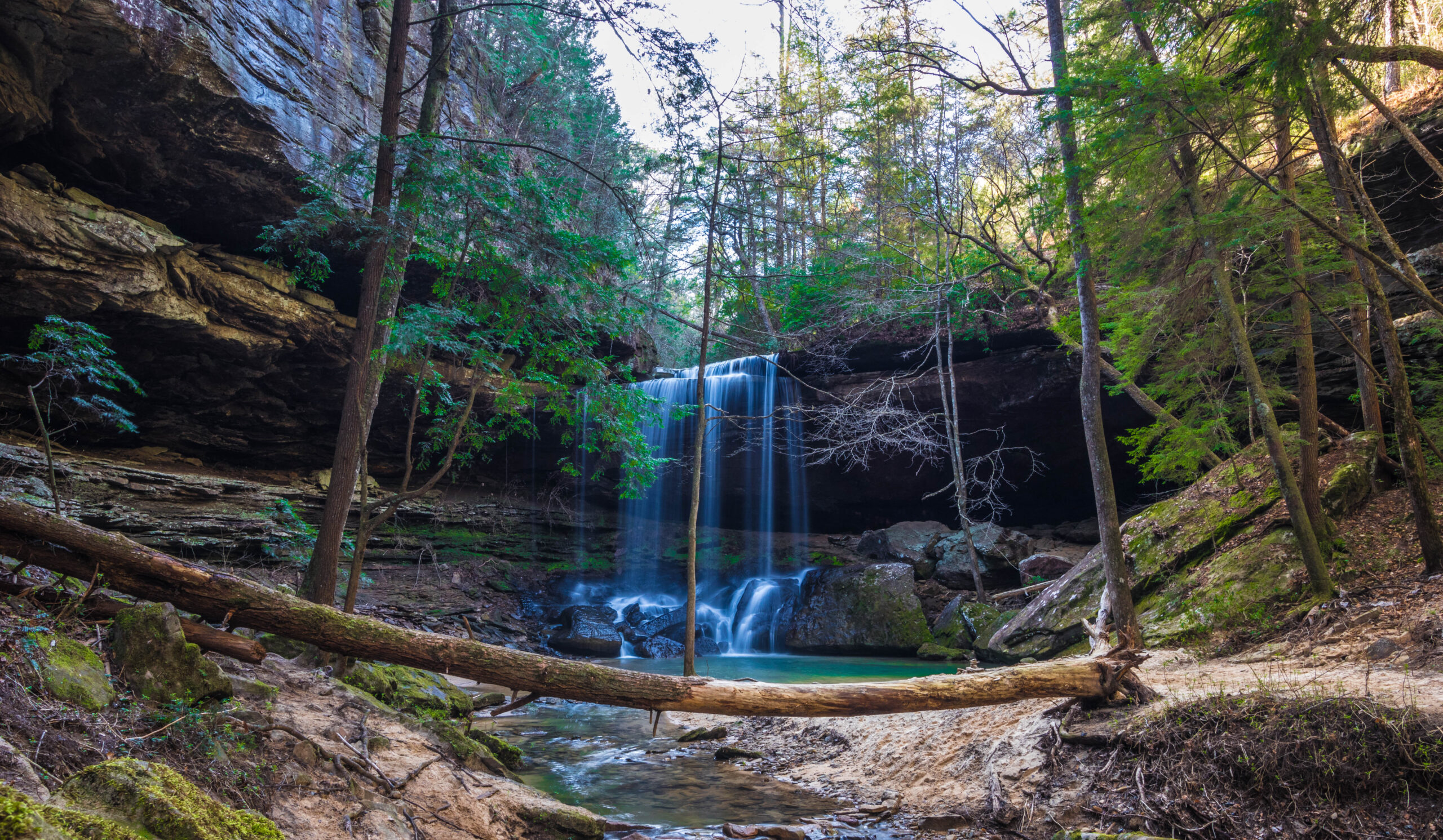 |
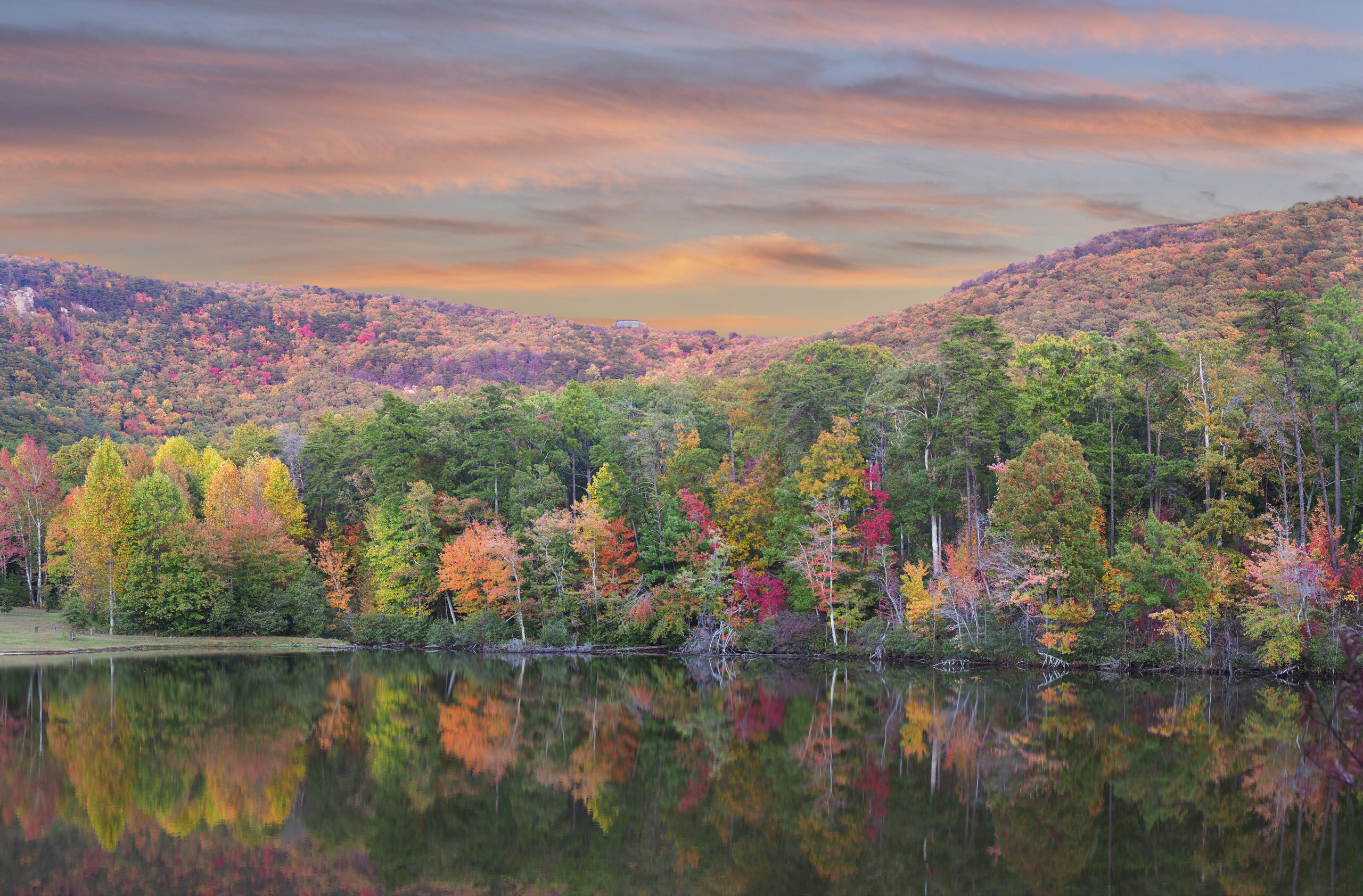 |
|
Bankhead National Forest
|
Talladega National Forest
|
|
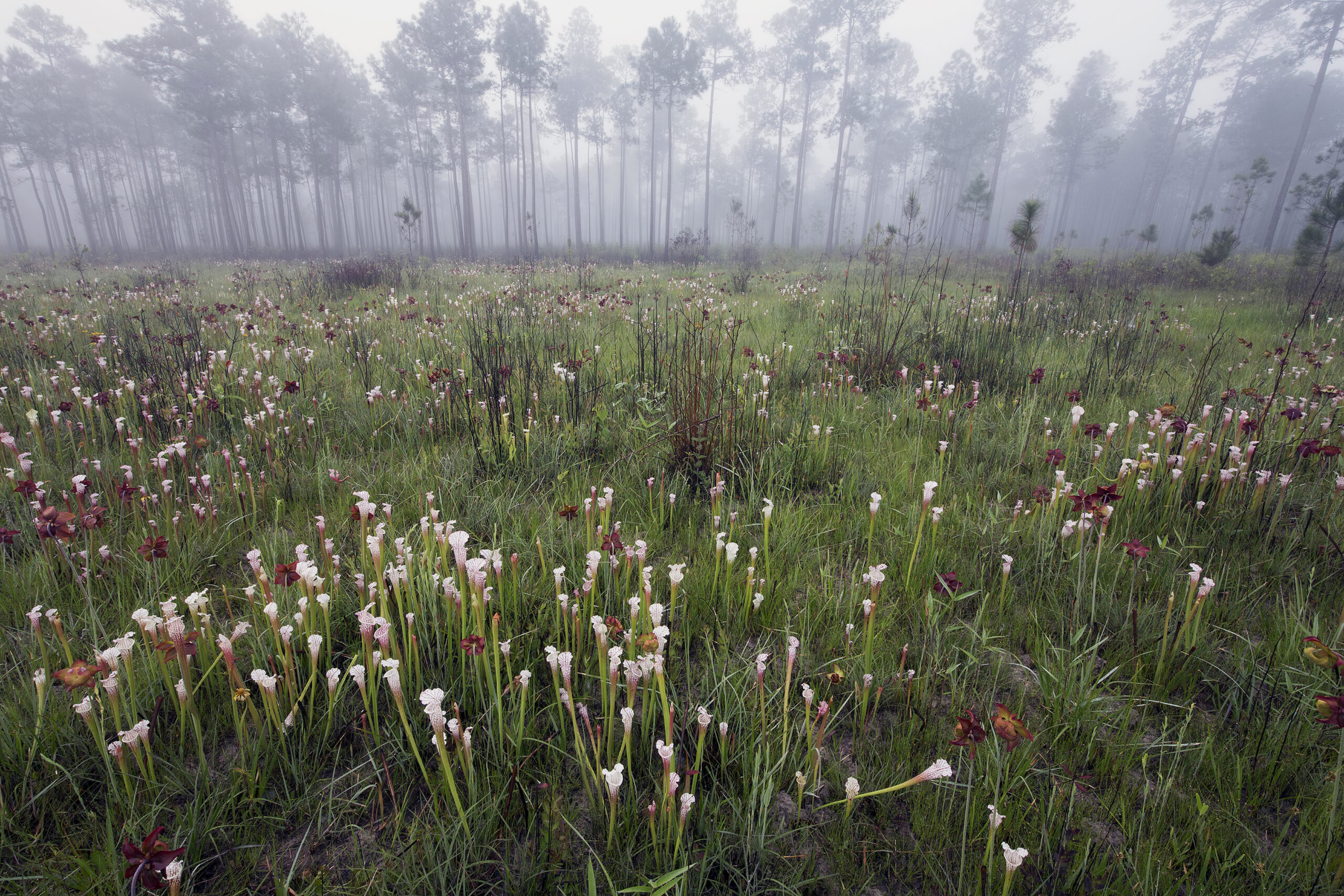 |
 |
|
Conecuh National Forest
|
Tuskegee National Forest
|
| Importance of Forests | |
| Forests provide habitat for wildlife. In fact, they are home to 80% of the world's terrestrial biodiversity (animals that live on land). More specifically, forests are home to 80% of all amphibians, 75% of all birds, and 68% of all mammals. They are also extremely important for the well-being of humans. Plants purify the air we breathe and the water we consume by taking in carbon dioxide and releasing oxygen during photosynthesis (the process by which green plants and some other organisms use sunlight to create sugars from carbon dioxide and water). | |
| Forests also help prevent erosion because plants' roots hold soil together underground. Without those plants, the soil in that area is likely to wash away, potentially causing landslides and floods in our communities and agricultural lands. Fallen trees and dead plants within forests go through a decomposition process that ultimately enriches the soil in that area, making it more fertile for other plants or humans to use. A barren landscape will not have nutrient-rich soil. | |
|
Forests are also considered to be the second largest storehouses (after oceans) for greenhouse gases. Humans create greenhouse gases, or gases that trap heat in our atmosphere, through burning fossil fuels, farming livestock, etc. Forests absorb these gases from the air and store them above and below ground. This not only helps us directly by improving air quality, but it also means that when a forest is cut down, all of the greenhouse gases it once stored underground will be release into the air. This is one of the main reasons deforestation (the clearing of a large area of trees) is a problem.
Humans also depend on the forest economically. Trees are to thank for a long list of products we use in our everyday lives such as lumber, rubber, paper and books, corks, cosmetics, chewing gum and other food, beverages like coffee, flooring, furniture, cabinetry, and much more! In 2018, the forest products industry generated $12 billion in timber and related products and employed more than 36,000 Alabamians. |
|
|
Right now, forests across the world are at risk for many reasons. The biggest reasons include:
The loss of forests across the world has and will continue to impact wildlife and humans, but scientists and conservationists across the world are making great strides in slowing down loss and increasing restoration efforts.
|
|
SOURCES USED FOR THIS PAGE:

Encyclopedia of Alabama |
 National Geographic |
|
 |
 |
|
 |
 |
|
 |

